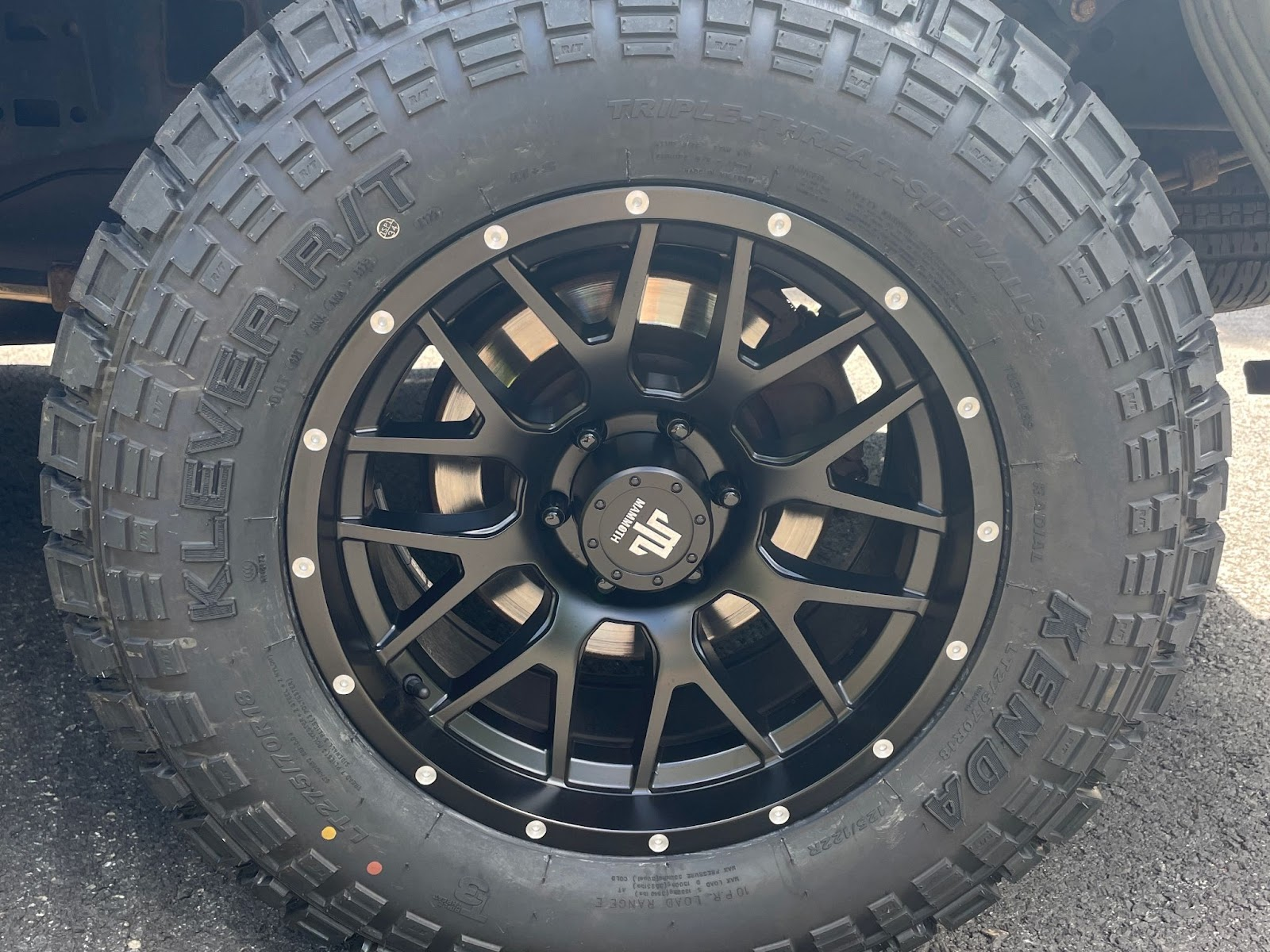We all use our trucks for different things, but at the end of the day, we all love them for the same reason: they’re practical. It doesn’t matter if you use your F-150 as a workhorse at the job site, a daily commuter in highway traffic, or a weekend warrior for off-roading adventures. Trucks are made for functionality and practicality, and that’s why you have one. They’re the ultimate vehicle for any lifestyle.
Arguably the most important part of any truck is the wheels and tires. Not only are F-150 wheels and tires a necessity for driving, but they dictate what you’re able to do with your truck. You want different tires for if you’re flying down the freeway than you do if you’re towing heavy cargo. As a result, picking the right wheels and tires for your F-150 is absolutely critical.
Thankfully, we’ve got plenty of bestselling tire options to choose from! But while every truck demands different tires, most F-150 owners find themselves wanting the same thing: heavy-duty tires that can handle the rigors of the road, the trail, and the job site.
Load Range vs. Load Index

The seriousness of tires is measured in terms of load, and for that there are two different spectrums to look at: load range and load index. Load range is an older term that used to be the standard for identifying heavy-duty tires, though it’s less commonly used now. Load range runs from “B” to “F,” with the former being the lightest and the latter being the most durable. Originally, load range had a strong correlation between how heavy-duty the tires were, as the thicker tires could accommodate heavier loads. With advancements in tire technology, however, that’s no longer the case. Now, the stronger tires on the load range are more durable and can accommodate more tire pressure, but that doesn’t necessarily impact the load rating.
Load index is what you really need to care about, because it directly correlates to carrying capacity for your F-150. Load index is a numerical code that runs from 0 to 150, with each number representing a carrying capacity. The higher the number, the greater the capacity. For example, a tire with a load index number of 90 has a carrying capacity of 1,323 pounds. Times that by four, and a vehicle with those tires can safely accommodate up to 5,292 pounds. A tire with a load index number of 120, on the other hand, has a carrying capacity of 3,638 pounds, or 14,552 for the entire vehicle. When picking the proper tires for your F-150, you’ll want to strongly consider the load index number, which is the final number listed on the tire. You should never opt for a load index number that is lower than what came stock with your truck. And it’s important to remember that the load index only accounts for how heavy-duty your tires are, not the rest of your vehicle.
How Heavy-Duty Load Ratings Impact Drivability and Durability

The primary purpose of installing tires with heavy-duty load ratings on your F-150 is to make sure that your vehicle is equipped for whatever tasks you throw at it. With heavy-duty tires, you can throw heavy machinery into the bed of your truck and still safely drive. But the strength of your tires can impact your truck in other ways.
Number of Plies
It probably goes without saying, but heavy-duty tires are more durable than their lighter-duty counterparts. They’re thicker, stronger, and have sturdier internal components. That means that they’re far less vulnerable to dangers in the road, like nails or glass. It also means that the treading will wear more slowly, and you can go far longer between tire replacements.
In simple terms, the “ply count” of a tire refers to the number of layers of fabric or material built into the tire’s body. Back in the day, more plies directly meant a tougher, stronger tire. Modern tires are made with advanced materials, so ply count doesn’t always equal strength anymore, but it’s still an indicator of how rugged the construction is. A higher ply-rated tire can usually handle more weight and resist punctures better, which is especially important for trucks that carry heavy loads or drive over rough surfaces. Typical options are:
- Passenger tires – 4 plies
- Light Truck (LT) tires – 6-ply (Load Range C) or 8-ply (Load Range D)
- Heavy-Duty LT tires – 10-ply (Load Range E) or even 12-ply (Load Range F)
The downside is that tires with heavy-duty load ratings can have a negative impact on drivability. That heavy-duty construction comes at a small cost, and you’ll likely notice it when driving your truck. The thickness and sturdiness of the tires will make for a less smooth ride, which will be a little less comfortable in your cabin, and you’ll likely hear much more road noise. Also, because heavy-duty tires weigh more and are less dynamic, they’ll usually negatively impact your fuel economy, and can have a negative effect on the handling, accelerating, and braking of your truck as well. Those trade-offs are more than worth it if you have to use your truck for serious business, though.
If you’re ready to install some heavy-duty tires on your workhorse F-150, then you’ve come to the right place. We have countless options to choose from, and a team of sales techs standing by to answer any questions you might have.



